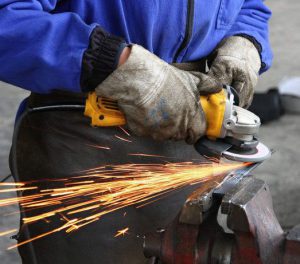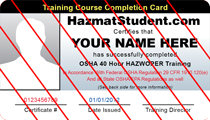| In Safe Hands | Workplace Hand Safety and Protection |
It’s easy to take for granted how important our hands are to our everyday life. We use our hands for nearly everything we do, so it should be no surprise that workplace hand injuries are a common occurrence. These injuries can be life-changing when they affect a worker’s ability to do their job or impact their quality of life.
To keep hands safe, it’s important for workers know about the types of hand injuries that frequently occur in the workplace, as well as how to prevent those injuries.
Common Types of Hand Injuries
- Cuts, Lacerations & Punctures: These types of injuries often occur when working with machinery, equipment, and tools. Frequently, the tool machinery is being used incorrectly or the wrong hand protection is being used for the job.
- Burns & Chemical Hazards: These injuries include thermal, electrical and chemical burns, as well as others dangers from hazardous chemicals.

- Fractures & Amputations: Falls or sudden blows to the hand, or working with moving machinery and equipment, often contribute to these types of injuries.
- Sprains & Strains: Using the wrong tool for the job, repetitive motions and falls often cause these types of injuries in the hand and wrist.
Safe Practices for Hand Protection
There are many things workers can do to protect their hands on the job:
- Always use the right gloves for the job and the specific hazard. Gloves and other personal protective equipment need to have the proper fit. Be aware that gloves can increase your danger in some situations, if the glove can get caught in machinery. Make sure to know and follow the correct safety procedures for the equipment you’re using.
- Keep hands away from moving parts and sharp objects, such as sharp edges, blades, nails, and splinters.
- Inspect tools before using them and ensure they are working properly. Make sure machine guards are in place and have not been removed. Know where the ‘emergency off’ switches and other safety features are for all equipment.
- Be aware of your hand and wrist position when using tools. Always use the right tool for the task at hand, and use ergonomic tools when possible.
- When cleaning or repairing tools, always make sure they are turned off without power supply.
- Don’t put your hands in spaces where you can’t see them.
- Remove rings and other jewelry when working. Rings are particularly dangerous around moving objects and machinery.
Use tools such as push sticks and brushes to keep your hands farther away from hazards. - Never perform work when hands are slippery.
- Use the proper PPE and take the proper precautions when working with chemicals.
Perhaps the best way to avoid workplace hand injuries is to stay focused on your personal safety at all times. Remain aware of your surroundings and the potential hazards of each task, and always act with your safety deliberately in mind.



